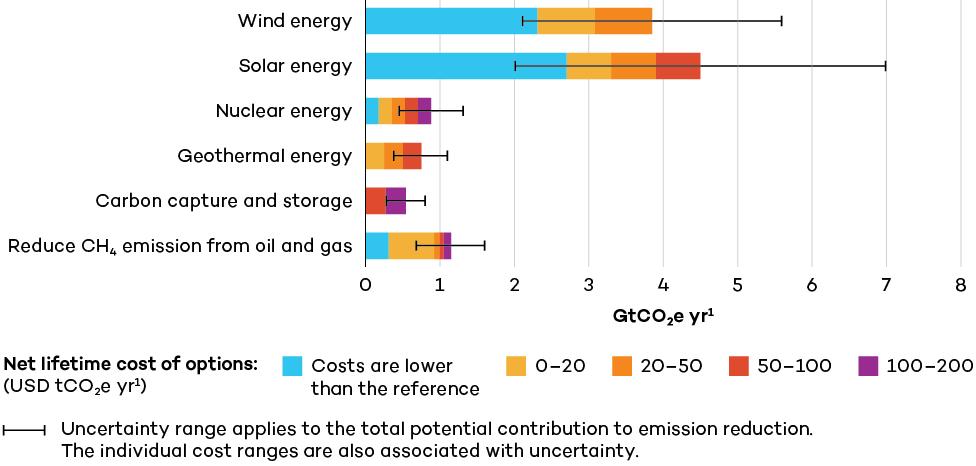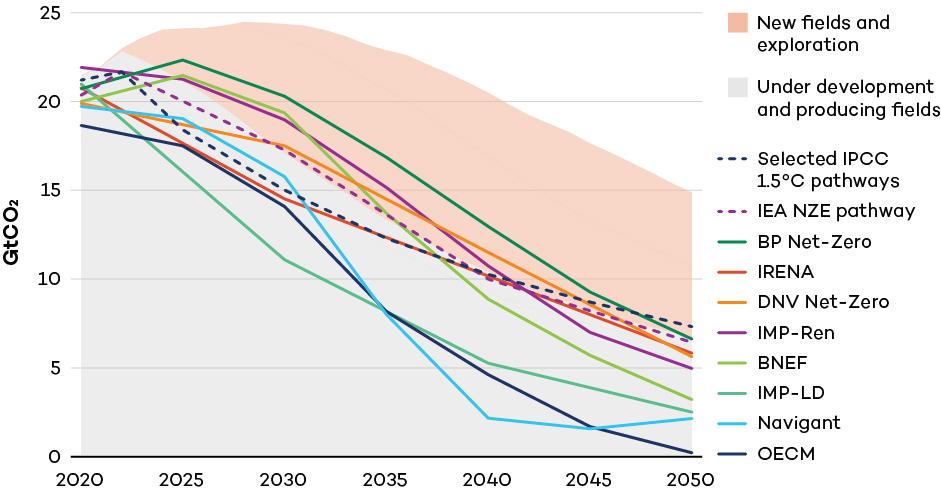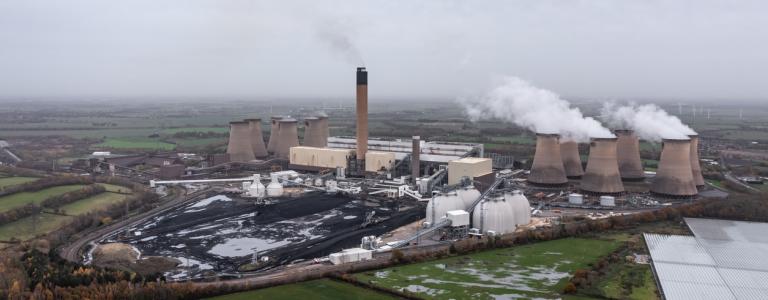Unpacking Carbon Capture and Storage: The technology behind the promise
Carbon capture and storage (CCS) is the shiny toy in climate change mitigation spaces these days, expected to draw all eyes at COP 28. The technology proposes to reduce emissions by capturing carbon dioxide from industrial processes and injecting it deep underground. Many oil and gas-producing countries, such as the United States and Canada, are looking to CCS to reduce emissions from production, while coal-reliant nations, such as China and India, are exploring the feasibility of fitting coal-fired power plants with the technology.
Despite the substantial interest that has been stirred up around the technology, many questions remain about its feasibility, persistently high costs, and track record to date. What is the current status of CCS technology, and why doesn’t it live up to its reputation as a definitive solution?
What Is CCS?
CCS technology aims to capture emissions at a large source before they are released into the atmosphere. This is different from carbon dioxide removal (CDR), which focuses on retroactively withdrawing CO2 already in the atmosphere through means such as planting trees or using direct air capture technologies. When CCS is used in fossil fuel production, it aims to capture upstream emissions—those created during the extraction and processing of the fuels—but does not reduce the bulk of emissions that are produced downstream when the fuel is burned. It also requires significant amounts of energy to operate the CCS technology itself, leading to more emissions if that energy is from fossil fuels. In fact, critical analysis of CCS technology finds that CCS can in some cases produce more emissions than it sequesters. Studies that try to show the promise of CCS technology often don’t include a full life-cycle analysis of the CCS process, thereby missing the full picture of the technology’s true inefficiency.
While CCS is currently one of the only means to address emissions in hard-to-abate sectors such as the cement industry, fossil fuel energy with CCS is outcompeted by renewable energy. CCS in the fossil fuel sector is proposed as a pathway to allow continued expansion of fossil fuel production.
Is CCS Technologically Feasible at Scale?
CCS has developed at a snail’s pace over the past few decades. Despite decades in development, there are only 30 commercial CCS projects globally, capturing a total of around 42.5 MtCO2/year, or less than 0.2% of the necessary emissions reduction needed to close the emissions gap by 2030. This falls dramatically short of the International Energy Agency's previous projection that we would reach 300 MtCO2/year of storage by 2020. A majority of the 149 CCS projects that were projected to be storing carbon by 2020 globally have been either cancelled or put on an indefinite hold because of incredibly high costs and technological challenges.
Is it possible to rapidly scale up CCS in the fossil fuel sector? The Intergovernmental Panel on Climate Change (IPCC) assessed this potential and found that there are big challenges associated with sequestering lots of CO2 (more than 3.8 GtCO2/year by 2050). In other words, the IPCC indicated that there are serious feasibility concerns over the large-scale deployment of CCS in the fossil fuel sector and that we ought to limit our expectations. Despite this, many emissions reduction models still design scenarios with fossil fuel CCS playing a much larger role (up to 10GtCO2/year by 2050) to compensate for slower declines in fossil fuel production and consumption. But achieving these levels of carbon storage would imply building the equivalent of the world’s biggest current carbon capture facility—capturing about 7MtCO2/year—every week until 2050.
Moreover, the potential for safe geological storage of the CO2 underground might be more limited than expected. Analysis of financial, contractual, and institutional barriers of long-term CO2 sequestration indicates that global use of CCS technologies is unlikely to be able to store more than 5 GtCO2/year underground by 2050.
The long distances between where the emitting facilities are located (where the carbon would be captured) and the appropriate geological repositories often constitute a barrier to implementation. Transporting the CO2 requires significant investment in pipelines and transportation infrastructure. Currently, it is common for the fossil fuel industry to avoid the need for transportation by injecting the CO2 into ageing wells on-site, which in turn increases pressure and helps extract more oil through “enhanced oil recovery” (EOR). The irony is that CCS is supposed to help reduce emissions, and EOR ultimately generates more carbon emissions by producing more oil.
Is CCS Cost Competitive?
The costs of CCS vary depending on various factors, such as the industrial process that it’s applied to and how concentrated the CO2 is, how far the CO2 is transported, and where it is stored. CO2 capture costs are projected to range from CAD 27–48/tCO2 to CAD 50–150/tCO2. But these cost estimates are mostly drawn from modelling; there are too few projects that have been operational long enough to give a good sense of long-term costs.
Despite decades of development of the technology, the costs of CCS in the oil and gas sector have been slow to fall. This is because the technology design is complex, with many different components, making innovation slow. It also needs to be highly customized for different applications; CCS in a refinery is much different than CCS in cement production, for instance. While technologies such as solar PV and batteries for electric vehicles have experienced dramatic cost reductions as they reached economies of scale, it’s unlikely that the same will happen for CCS.
Figure 1. Cost and potential efficacy of emissions reductions by CCS, methane (CH4) reduction, and renewable energies

Because of its high cost, CCS in the fossil fuel sector continues to rely heavily on government subsidies in order to be economically viable. At the same time, oil and gas companies globally are investing very little of their own money in CCS or renewable energy, spending less than 1% of their capital expenditures on clean energy investment in 2020.
In determining cost competitiveness for emissions reductions, CCS in the energy sector should be judged against alternative energies that can reduce emissions by replacing fossil fuels. The IPCC finds that CCS in the energy sector is among the most expensive and least effective mitigation technologies in the near term.
Closer Look: CCS in coal-fired power generationAs of November 2023, four coal-fired plants with CCS are operational worldwide: two in China, one in the United States, and one in Canada. The development of CCS technology for coal power has been particularly slow, with only one plant operational as of 2021. China's two CCS facilities, launched in 2021 and 2023, capture a combined 0.65 Mtpa of CO2 annually. The Petra Nova plant in the United States, operational since 2016, was temporarily shut down in 2020 due to declining oil prices and reopened in September 2023. This facility, used for EOR, has historically not achieved its target of 1.4 Mtpa of captured emissions. Canada’s Boundary Dam CCS facility, operational since 2014 in Saskatchewan, had an original target to capture 90% of the plant’s emissions but captures only about 50% on average. Collectively, these four CCS facilities represent billions of dollars of investment and capture less than 0.02% of the coal industry's total emissions. In India, the national government has not announced any policy support for CCS, but there is emerging interest in the technology from power producers. |
Closer Look: CCS in Canada’s oil and gas sectorCanada currently has seven operational CCS projects, mostly in the oil and gas sector. These projects capture only about 0.5% of the country's total emissions, and the majority of the carbon captured is used to enable further extraction through EOR. Despite its limited efficacy, CCS is being touted as the central emissions reduction solution by Canadian oil and gas proponents such as the Pathways Alliance and has received extensive financial support from governments in Canada. The federal government has committed at least CAD 9.1 billion, in addition to CAD 3.8 billion from the governments of Alberta and Saskatchewan, with Alberta set to invest more. This level of investment outpaces support offered by the 2022 U.S. Inflation Reduction Act. This public investment in CCS is risky for taxpayers and takes away from funds available to support other, more cost-effective emission reduction strategies. Moreover, investing in CCS for oil and gas prolongs production of and reliance on the fuels without addressing the vast majority of emissions that are created when those fuels are burned downstream. Not to mention that these supports for CCS in fossil fuel production constitute subsidies under the World Trade Organization’s definition and contradict Canada’s commitment to phase out inefficient fossil fuel subsidies. |
What Role Will Fossil Fuel CCS Play in Limiting Warming to 1.5°C?
In order to limit warming to 1.5°C, the IPCC finds that the production of oil and gas needs to decline by 65% by 2050. IISD research further shows that selected IPCC 1.5°C scenarios that rely only on feasible levels of CCS indicate that the world should be producing 30% less oil and gas by 2030 compared to 2020 levels. Coal production needs to decline by nearly 80% this decade to align with the 1.5°C target.
These findings are echoed by the International Energy Agency's Net Zero Emissions scenario, which concludes that there is no room for any new fossil fuel extraction projects. Extraction and use of fossil fuels from mines and fields that are already in operation or under development today is more than enough to meet global demand under 1.5°C pathways; there is no need to develop any more oil and gas fields.
In addition to the IPCC scenarios, IISD analysis shows that 1.5°C pathways from the International Renewable Energy Agency, UNEP Production Gap Report, Bloomberg New Energy Finance, and various other authoritative intergovernmental organizations and energy consultancies all feature such steep declines in oil and gas production that developing any fossil fuels extraction activities from new fields or mines would generate emissions in excess of what is necessary to limit warming to 1.5°C.
Figure 2. Global oil and gas production, based on other selected 1.5°C pathways

Closer Look: CCS and the push for phase-out of “unabated” fossil fuel production at COP 28The topic of phasing out fossil fuels promises to be a central part of the discussion at COP 28 in Dubai. The European Union, among others, is calling for a phase-out of "unabated" fossil fuels. The language of "abatement" leaves a loophole for continued use of fossil fuels as long as a technology to capture the emissions from production is used. The technological and economic feasibility of CCS is central in the conversation around "abated" production. Given the challenges that the technology has faced, limiting its use and efficacy to date, it is clear that CCS is not able to abate emissions from fossil fuels sufficiently. Given the absence of other deep and fully developed emissions reductions technologies, abated production is not possible. Moreover, this loophole is being used to push for prolonging and expanding fossil fuel production and use, with the assumption that CCS and other emissions reduction technologies will suffice. This is problematic, given that the majority of emissions are produced at the end uses of fossil fuels, which are not addressed through CCS. Countries are already planning to produce double the amount of fossil fuels as would be needed under a 1.5°C scenario in 2030, exceeding expected global demand, a gap that CCS will not address. |
Conclusion
Despite the hype, the science behind CCS technology doesn’t measure up. The technology is incredibly expensive, captures relatively minimal amounts of CO2, and is heavily reliant on large government subsidies. In the coal industry specifically, CCS has demonstrated a particularly poor performance, with a sluggish rollout that further underscores the inefficiency of the technology. Worryingly, some fossil fuel companies have been trying to use CCS technology as a justification for a further expansion of production, which is incompatible with global climate targets. Heavy reliance on CCS in the energy sector is misguided, as renewable energy has seen dramatic cost reductions that make it more and more economical. Discussions of "abated" fossil fuels at COP 28 and beyond should take a closer look at the technology behind the promise.
You might also be interested in
Carbon Minefields: Oil and gas exploration surging to pre-Covid levels
Oil and gas exploration is booming despite an agreement at last year’s COP 28 climate summit to transition away from fossil fuels.
July Edition | Carbon Minefields Oil and Gas Exploration Monitor
In June 2024, six governments issued 18 oil and gas exploration licences with embodied emissions of 14.7 MtCO2, led by Russia and China.
The Indonesia Cooking Diaries Study
This study evaluates the feasibility and implications of switching from cooking with LPG to induction stoves in Indonesian households.
Report Calls on Fossil Fuel Producers to Map “Transition Away” in NDCs
With governments due to submit the next generation of NDCs in 2025 a new report identifies five elements countries should include to reflect the outcome of the global stocktake.
